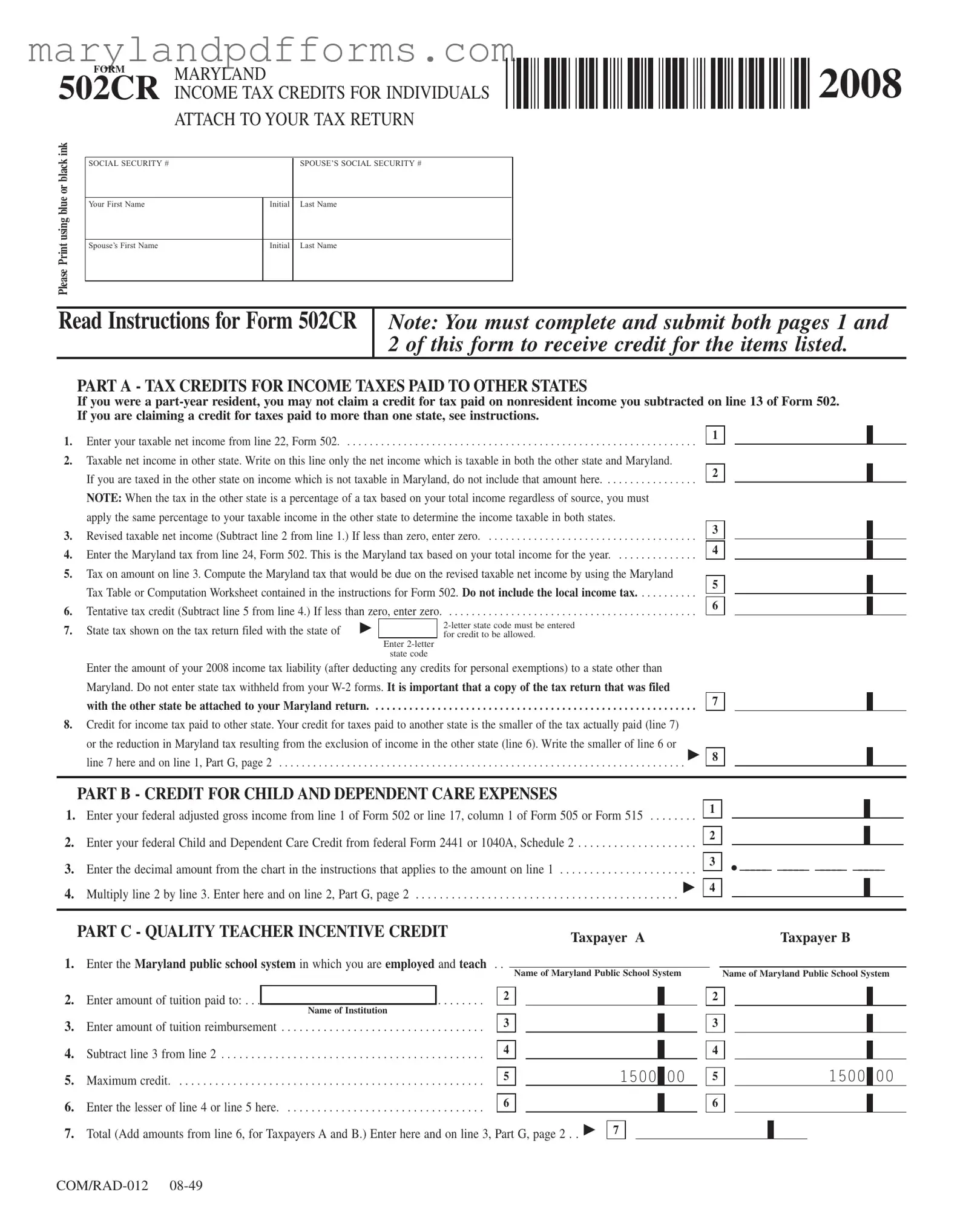The Maryland 502Cr form is used to claim personal income tax credits for individuals. It allows taxpayers to report various credits, including those for income taxes paid to other states, child and dependent care expenses, and several other specific credits. This form must be attached to your annual tax return.
Eligibility for the Maryland 502Cr form primarily applies to Maryland residents who have incurred qualifying expenses or paid taxes to other states. Non-residents filing Form 505 or Form 515 are not eligible for the credits claimed on this form. Taxpayers must also meet specific criteria for each type of credit claimed.
How do I claim a credit for income taxes paid to other states?
To claim a credit for income taxes paid to other states, complete Part A of the 502Cr form. You will need to provide details such as your taxable net income, the taxable income in the other state, and the tax liability from the other state's return. Attach a copy of the tax return filed with the other state to your Maryland return. If you paid taxes to more than one state, a separate 502Cr form must be completed for each state.
When submitting the Maryland 502Cr form, you must include the following documentation:
-
A completed and signed copy of your tax return filed with the other state for any credits claimed for taxes paid to other states.
-
For the Child and Dependent Care Credit, attach the federal Form 2441 or 1040A, Schedule 2.
-
Documentation supporting any other specific credits claimed, such as tuition receipts for the Quality Teacher Incentive Credit.
Yes, certain credits may be carried forward to future tax years. For example, excess credits for preservation and conservation easements can be carried forward for up to 15 years. However, most other credits cannot be carried forward. Be sure to check the specific rules for each credit to understand your options.
The Maryland 502Cr form must be filed along with your annual tax return, which is typically due on April 15th. If you need additional time, you may file for an extension, but ensure that the 502Cr form is still attached to your completed return by the extended deadline.
Yes, there are limits on certain credits. For instance, the maximum credit for the Quality Teacher Incentive Credit is $1,500 per qualifying individual. The Credit for Preservation and Conservation Easements is limited to $5,000 per owner. It’s essential to review the instructions for each credit to understand the specific limits and conditions that apply.
